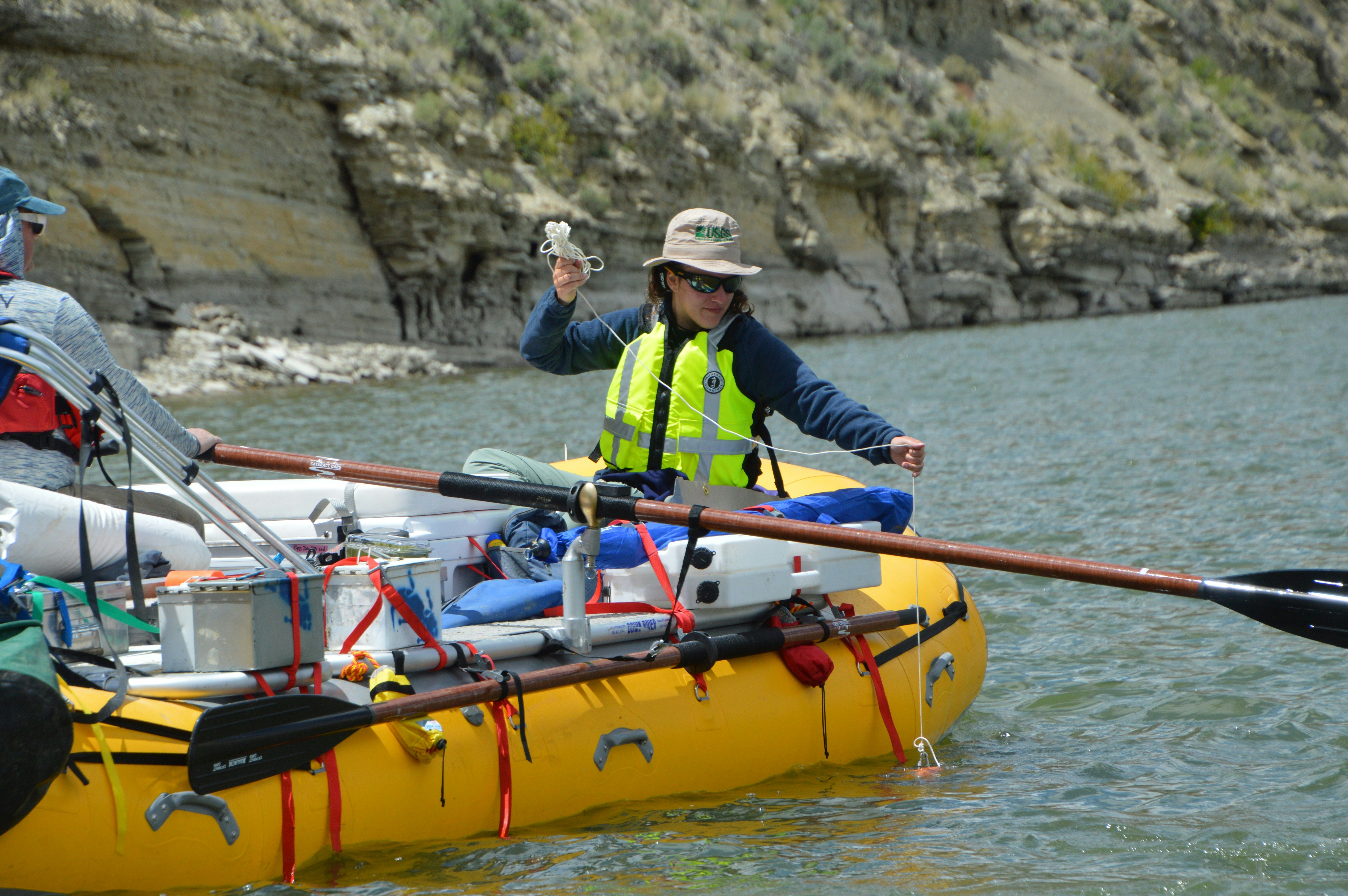Best Universities in the World in 2022 Adopt Online Degree Enrollments
Navigating the new realities of remote learning has become a key challenge for universities across the country. To continue providing quality educational experiences, many universities have found innovative ways to pivot their curriculums with online programs designed to meet today’s needs.
On November 14, 2022, Research.com published the 1st edition of the annual ranking for the best universities in the world. The ranking is unique, as its primary goal is to evaluate the impact and scientific contributions of researchers and scholars from universities worldwide, focusing on objective data reflecting the prominence of academic researchers, a metric that is often missing from other rankings out there.
With this ranking, our intention is to encourage decision-makers, researchers, and entrepreneurs from around the world to discover where leading researchers and experts in various fields of study work are heading.
In the 2022 edition of the best universities in the world ranking, more than 166,880 scientist profiles from Microsoft Academic Graph and Google Scholar have been inspected using multiple metrics and indicators to qualify them for inclusion in the ranking.
Using the total sum of H-index values from Microsoft Academic Graph for every leading scientist affiliated with a particular university, Research.com generated the top 1000 list for 2022. For each scientific discipline, the H-index threshold for approving a scientist was set differently. In most cases, it was equal to 30 or 40. For researchers to be considered for the ranking, their H-index, rate of contributions to a specific research area, and their accomplishments and awards were all taken into account.
The Key Findings About 2022 Best Universities in the World
- Leading the list are universities from the US, represented by 234 institutions (23.4% of all ranking universities).
- The state of California is the home of the best universities in the USA.
- Other countries with a significant number of leading universities are China (97 universities or 9.7%), the United Kingdom (75 universities or 7.5%), Japan (68 universities or 6.8%), and Germany (62 scientists or 6.2%).
- In 2022, Harvard University has 2,113 leading scientists listed, which makes it the research institution hosting the highest number of leading scientists in the world.
- Oxford University is the only institution outside the US that ranks in the top 10.
- Among universities from Asia, the University of Tokyo in Japan is ranked highest at spot 27.
- The highest number of leading universities is based in Europe with a total of 394 institutions (39.4% of all top universities).
The full ranking for the 2022 ranking of the best universities in the world can be found here:
BEST UNIVERSITIES IN THE WORLD RANKING
World’s Best Universities by Country & Region
On the list of the world’s best universities, the United States has the highest number of schools as represented by 234 institutions or 23.4% of the entire ranking. China comes next with 97 universities and is followed by the United Kingdom with 75 universities, Japan with 68 universities, Germany with 62 universities, and Italy with 53 universities.
On the first 10 spots in the ranking, 9 out of 10 universities are from the United States except for Oxford University.
In North America, 234 leading institutions are from the US, while Canada is represented by 36 universities.
In Europe, the United Kingdom has the highest number of leading universities, with 75 ranking institutions, which is equivalent to 19% of all ranking institutions, followed by Germany with a 15% share (62 institutions) and Italy with a 13% share(53 institutions).
In Asia, China tops the list with 97 universities, accounting for 45% of all ranking Asian universities. Japan tallies second with a 31% share.
In the Middle East, Iran leads the ranking with a 33% share or a total of nine universities that made it to the list, followed by Israel as represented by seven ranking institutions or a 26% share.
In South America, Brazil has 15 ranking universities (68%) while Argentina and Chile have three ranking universities each.
In Oceania, Australia has the most universities with 35 listed schools (83%), followed by New Zealand with seven ranking institutions.
In Africa, South Africa is the only country that made it to the list with seven ranking universities.
When ranked based on geographical regions, most leading universities are located in Europe with a total of 394 universities or 39.4% of the whole list, followed by North America with 272 universities, and Asia with 214 universities. South America and Africa are the least represented regions with 22 and seven ranking institutions, respectively.
How Can Online Degrees Bridge the Gender Gap for Competitive Careers?
Online degree programs are increasingly fostering pathways that empower female professionals to access competitive career opportunities. Institutions with robust online infrastructures are tailoring curricula and support services to address the unique challenges faced by women in traditionally underrepresented fields. Data indicates that graduates from these programs are better positioned to enter emerging industries and qualify for roles in sectors known for high paying jobs for women, thereby helping bridge historic employment gaps. Enhanced mentorship, targeted career services, and strategic industry partnerships further enable these programs to drive a measurable impact on gender diversity within high-growth fields and leadership roles.
Best Universities by US States
In terms of the total H-index provided by the top researchers as well as the total number of top scientists, the state with the best universities in the USA is California. 19 of the world’s best universities are based in California, and as many as 4 of them are listed among the world’s top 10. Universities from this state are a place of work for 6871 top scientists with a total combined H-index of 443,794.
On the other hand, the state of Texas is the state with the highest number of the world’s leading universities with 21 ranking institutions, represented by 2,228 leading scientists. California ranks second with 19 institutions, and New York is third with 17 universities.
What Are the Career and Financial Benefits of the quickest degree to get online?
Rapidly earned online degrees offer a measurable return on investment by minimizing both time and financial commitments while providing industry-relevant skills. In these programs, streamlined curricula focus on core competencies that align with current market demands, enabling graduates to transition swiftly into competitive roles. Analytical metrics such as time-to-degree, cost-per-credit, and projected salary growth help assess program value. Evidence suggests that these efficient programs, when paired with effective career placement support, contribute directly to enhanced career prospects and long-term financial benefits. For more information, check out our resource on the quickest degree to get online.
How Do Accreditation and Quality Standards Impact Online Degree Credibility?
Proper accreditation is essential for validating the educational rigor and reliability of online programs. Recognized accrediting bodies set strict criteria that ensure institutions maintain robust academic standards, state-of-the-art digital infrastructures, and comprehensive support services. These quality benchmarks help prospective students distinguish between credible programs and those that may not meet industry expectations. Additionally, standardized assessments of curriculum design and faculty expertise facilitate informed decision-making, aligning academic offerings with evolving professional requirements. For professionals exploring targeted credentials, 6 month programs that pay well represent an attractive option, providing industry-relevant skill enhancement within a streamlined framework.
Best Universities Adapt to Online Degrees Enrollments
The best universities are quick to adapt to the changing landscape of higher education. In the Fall of 2020, 44% or 7 million of all undergraduate students chose to enroll in online degrees. This number is 186% higher compared to 2019 figures (NCES, 2022). This signals a strong preference for the convenience and flexibility that online degrees offer. All over the world, postsecondary education online offerings are becoming a major part of every college and university program.
This shift is evident in university initiatives. Just this year, St. Mary’s University School of Law has become the first fully online J.D. program to be accredited by the American Bar Association (Pelletier et. al., 2022). In Europe, business schools have formed the European Common Online Learning (Ecol) group, which is composed of eight schools from Italy, France, and Switzerland, among others. Meanwhile, Portland State University (PSU) has introduced the “Attend Anywhere" model that intends to understand what a hybrid university might look like and also to reimagine the future of instructional modalities (Pelletier et. al., 2022).
Clearly, there is an increased interest in online degrees among postsecondary and graduate students. While higher education enrollment decreased in Fall 2021 based on National Center for Education Statistics (NCES) data, enrollment went up in many predominantly online institutions. As undergraduate enrollment fell by 4.4% from fall 2019 to fall 2020, enrollment in undergraduate online degrees increased by 5% and 10% for graduate studies (NCES, 2022).
Among postsecondary students in the United States in 2022, 82% cited a specific field of study, including specific majors, as the primary reason for online college selection, 74% cited lower tuition and fees, while 68% identified the time it takes to complete the program as a significant advantage of completing degrees online (Statista, 2022).
Initially, offering online degrees encountered resistance, especially among 49% of the teaching faculty, with 28% also expressing concern over intellectual property (Capranos and Magda, 2022). At the student level, concerns about learning outcomes emerged in relation to reduced classroom time. However, a study by Muller and Mildenberger (2021) found that despite reduced in-person classes, the differences in learning remained small. In their research “Facilitating flexible learning by replacing classroom time with an online learning environment: A systematic review of blended learning in higher education," as published in Educational Research Review, the authors concluded that within higher education institutions “despite reduced classroom time of between 30% and 79%, such blended learning environments are not associated with poorer learning outcomes but are equivalent to conventional classroom instruction."
How Can Accelerated Online Programs Advance Your Career?
In response to the growing demand for expedited upskilling, several institutions are now offering accelerated online programs designed to streamline academic pathways without compromising learning quality. These programs focus on concise, outcome-based curricula that empower professionals to rapidly acquire market-relevant skills, facilitating swift career transitions or advancement within their current fields. For individuals seeking a highly efficient alternative to traditional degree timelines, you can get a degree in 6 months. Offering flexible learning schedules and leveraging modern digital tools, accelerated courses provide practical applications and expert mentorship, ensuring that learners remain competitive in an ever-evolving workforce.
Today, 94% of American Association of State Colleges and Universities (AASCU) member institutions are already offering 20 fully online programs on average. From 48% in 2013, the number of AASCU institutions offering fully online programs increased to 76% in 2022, with 82% offering fully online graduate degrees. Investment in online learning infrastructure also became a priority. In 2022, among AASCU institutions, 72% expressed plans to increase their investments (Capranos and Magda, 2022).
Providing students with the option to complete their degrees online gives them control of their learning pathway. A recent work by Zhao and Watterston (2021) published in the Journal of Educational Change mentioned the importance of providing students with autonomy when it comes to learning. In their work entitled “The changes we need: Education post-COVID-19," the authors argued that “students are diverse and have different levels of abilities and interests that may not align well with the content they are collectively supposed to learn in the classroom."
Classroom differentiation is a long-held concept in education, and both teachers and students are encouraged to pursue activities that will promote collaboration in learning environments. Zhao and Watterston (2021) added, “the recent movement toward personalized learning needs students to become more active in understanding and charting their learning pathways." This means that the personalized nature of online degrees will most likely deliver enhanced teaching and learning outcomes.
From emergency-based online content delivery, the higher education landscape slowly transformed into offering full-time online pedagogy. The best universities did not just manage to shift seamlessly to an online system, they have also demonstrated how to effectively redefine instructional modalities. These universities know what it takes to deliver optimized, student-centered learning, even in the virtual realm.
How Do Online Dual Degree Programs Enhance Educational and Career Outcomes?
Online dual degree programs present a unique pathway for students aiming to combine specialized academic research with industry-relevant skills. These programs are designed to integrate coursework from two distinct disciplines, enabling learners to develop a broader perspective and improved problem-solving capabilities without duplicating academic efforts. They provide an efficient solution for professionals seeking to accelerate their qualifications while maintaining a flexible study schedule. For comprehensive details on the structure and benefits of such offerings, please review our guide on online dual degree programs.
Can You Earn a Ph.D. Online Without a Dissertation?
For many professionals seeking flexible and accelerated graduate studies, innovative doctoral pathways are emerging that replace the traditional dissertation with applied research projects, case studies, or industry-focused portfolios. These alternatives are designed to validate advanced expertise while aligning with contemporary workforce needs and competency-based education models. Candidates considering these options should evaluate how such programs can facilitate both academic progress and professional advancement by providing practical, real-world applications. For further details, please review online doctoral programs without dissertation.
Regional Leaders & H-index Distribution
- Harvard University tops the list of the best universities in the world with a total H-index of 170,977 and 2,113 ranking scientists.
- For Europe, Oxford University tops the ranking in the region and ranks 5th globally.
- The University of Tokyo in Japan leads the list in Asia and ranks 27th in the world ranking.
- For Oceania, the University of Sydney in Australia tops the list in the region with a world ranking of 42.
- Universidade de São Paulo in Brazil leads in South America with a world ranking of 158.
- In Africa, the highest-ranking university is the University of Cape Town in South Africa ranking at position 336 in the world.
For H-index the average for the top 10 universities is 68,012 while the average for all 1,000 universities in the ranking is 5,836.
The average number of papers published by scientists from the top 10 universities in the ranking is 207,499 against an average of 19,874 for all 1,000 universities.
For the top 10 universities, the average total number of citations is 27,801,046 against an average of 1,812,603 for all 1,000 universities.
You can learn more about the methodology used to create the ranking here.
About Research.com
All research was coordinated by Imed Bouchrika, PhD, a computer scientist with a well-established record of collaboration on a number of international research projects with different partners from the academic community. His role was to make sure all data remained unbiased, accurate, and up-to-date.
Research.com is the number one research portal for science rankings. Our mission is to make it easier for professors, research fellows, and those studying for a PhD or a master’s degree to progress with their research and to ensure they are always up-to-date with the latest conferences around the world and publications related to their work. Research.com is also involved in the publication of an annual ranking of leading scientists in a wide range of scientific disciplines.
References:
- Capranos, D., Magda, A. J. (2022). Online learning at public universities 2022: Views of AASCU member institutions as COVID-19 transforms higher education. Maitland, FL: Wiley Inc. https://universityservices.wiley.com/wp-content/uploads/2022/02/2022-OnlineLearningatPublicUniversities2022-Final.pdf
- Muller, C. and Mildenberger, T. (2021). Facilitating flexible learning by replacing classroom time with an online learning environment: A systematic review of blended learning in higher education. Educational Research Review. https://doi.org/10.1016/j.edurev.2021.100394
- National Center for Education Statistics (2022). Fast Facts: Distance Learning. https://nces.ed.gov/fastfacts/display.asp?id=80
- Pelletier, K., McCormack, M., Reeves, J., Robert, J. and Arbino, M. with Al-Freih, M., Dickson-Deane, C., Guevara, C., Koster, L., Sanchez-Mendiola, M., Bessette, L.S. andStine, J. (2022). 2022 EDUCAUSE Horizon Report, Teaching and Learning Edition, https://library.educause.edu/-/media/files/library/2022/4/2022hrteachinglearning.pdf
- Statista (2022). Reasons for online college selection among students in the U.S. 2022. https://www.statista.com/statistics/956111/reasons-online-college-selection-students/
- Zhao, Y., Watterston, J. (2021).The changes we need: Education post-COVID-19. J Educ Change 22, 312 (2021). https://doi.org/10.1007/s10833-021-09417-3


































